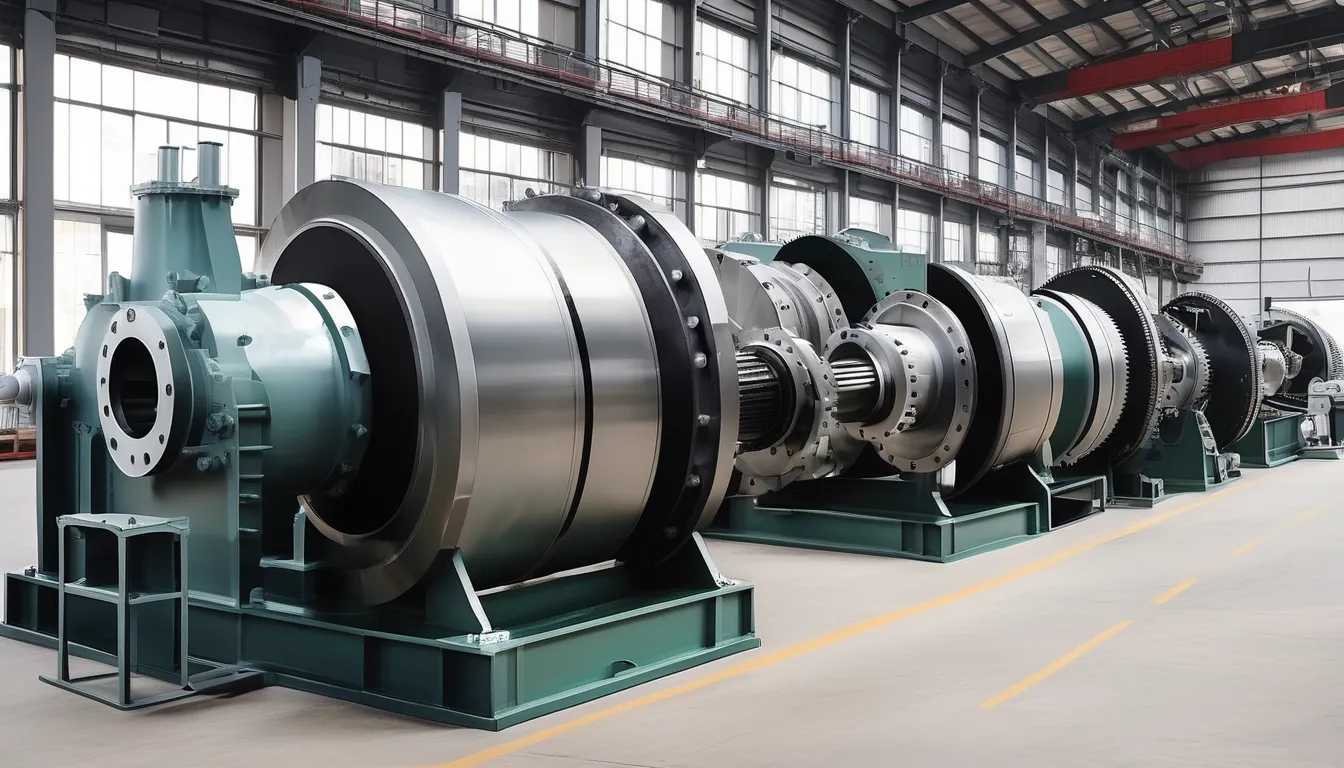
When you consider the future of gearbox manufacturing, it’s clear that sustainability isn’t just a trend—it’s a necessity. By focusing on eco-friendly practices like sustainable material sourcing and energy-efficient production techniques, you can significantly reduce your ecological footprint. Implementing waste reduction strategies and lifecycle assessments further enhances your impact. However, the question remains: how can innovations in design and technology transform these practices from mere compliance to competitive advantage? Exploring this could reshape your approach to manufacturing in ways you might not have anticipated.
Sustainable Material Sourcing
In today’s gearbox manufacturing landscape, companies are recognizing the importance of sustainable material sourcing. You understand that sourcing materials responsibly not only benefits the environment but also enhances your brand’s reputation.
By choosing recycled or renewable materials, you can significantly reduce the ecological footprint of your products. You might consider using materials like aluminum or steel that are easier to recycle. These metals not only provide durability but also align with sustainability goals.
Additionally, explore bio-based plastics or composites, which can replace conventional materials, offering both performance and a lower environmental impact.
It’s crucial to work closely with suppliers who share your commitment to sustainability. By establishing strong partnerships, you ensure that your materials are sourced ethically and responsibly. You can also implement traceability practices to verify the origins of your materials, reinforcing your sustainability claims.
Don’t forget to evaluate the lifecycle of the materials you choose. Assess their impact from extraction to disposal, and opt for those that promote circular economy principles.
Energy-Efficient Production Techniques
Energy-efficient production techniques are transforming the gearbox manufacturing process, allowing you to reduce costs while minimizing environmental impact. By adopting advanced technologies like automated machinery and smart sensors, you can optimize energy consumption throughout the production cycle.
These innovations help you monitor energy usage in real-time, enabling you to identify inefficiencies and make immediate adjustments.
Implementing lean manufacturing principles can also enhance energy efficiency. By streamlining processes and eliminating waste, you’ll not only save energy but also improve overall productivity. Techniques such as just-in-time production ensure that you’re using resources only when needed, further decreasing energy costs.
Additionally, consider investing in renewable energy sources, like solar panels or wind turbines, to power your operations. This shift not only lowers your carbon footprint but can also lead to long-term savings on energy bills.
Lastly, employee training plays a crucial role. When your team understands the importance of energy conservation and how to implement energy-saving practices, you’ll foster a culture of sustainability that permeates your entire operation.
Waste Reduction Strategies
Reducing waste in gearbox manufacturing is crucial for both your bottom line and the environment. By implementing effective waste reduction strategies, you can enhance efficiency and minimize costs.
Start by evaluating your production processes and identifying areas where waste occurs. Streamlining operations can significantly cut down on excess material and energy use.
Consider adopting lean manufacturing principles. This approach focuses on eliminating waste at every stage, from design to production. You can also implement a just-in-time inventory system to reduce overproduction and minimize storage waste.
Additionally, recycling materials like metal shavings and defective parts can transform potential waste into valuable resources.
Incorporating technology can further aid your waste reduction efforts. Automated systems can monitor and adjust processes in real-time, ensuring that materials are only used as needed.
Training your team on waste management practices will foster a culture of sustainability within your organization.
Lastly, collaborate with suppliers who prioritize eco-friendly practices. By working together, you can ensure that your entire supply chain aligns with your waste reduction goals.
Embracing these strategies not only benefits the environment but also enhances your reputation and competitiveness in the market.
Lifecycle Assessment Practices
Evaluating your production processes sets the stage for implementing lifecycle assessment (LCA) practices in gearbox manufacturing. LCA helps you analyze the environmental impacts of your products from raw material extraction to end-of-life disposal. By identifying areas for improvement, you can minimize waste, reduce energy consumption, and enhance sustainability.
Here’s a simple breakdown of the LCA stages:
| Stage | Description | Impact on Sustainability |
|---|---|---|
| Raw Material Extraction | Assess the resources used and their sustainability | Reduces resource depletion |
| Manufacturing Process | Evaluate energy use and emissions during production | Lowers carbon footprint |
| End-of-Life Disposal | Analyze the disposal methods and potential for recycling | Promotes circular economy |
Innovations in Gearbox Design
Innovations in gearbox design are transforming how we approach efficiency and sustainability in manufacturing.
You’ll find that today’s advancements focus not just on performance but also on reducing environmental impact. By embracing these new designs, you can contribute to a more sustainable future while enhancing operational efficiency.
Here are four key innovations driving this change:
- Lightweight Materials: Manufacturers are incorporating advanced materials like carbon fiber and aluminum, which reduce the weight of gearboxes and improve energy efficiency.
- Modular Designs: Modular Parallel Shaft Drives gearbox es allow for easy upgrades and repairs, minimizing waste and extending product lifespans.
- Smart Technology: Integrating IoT sensors into gearbox designs enables real-time monitoring, allowing for predictive maintenance that can reduce downtime and resource consumption.
- Additive Manufacturing: 3D printing techniques facilitate the production of complex gearbox components, reducing material waste and allowing for customized solutions tailored to specific needs.
Conclusion
Incorporating sustainability into gearbox manufacturing isn’t just a trend; it’s a necessity. By focusing on eco-friendly material sourcing, energy-efficient production, and effective waste reduction, you can significantly reduce your ecological footprint. Embracing lifecycle assessment and innovative designs further enhances your commitment to a sustainable future. By adopting these practices, you’re not only improving your operations but also contributing to a healthier planet. Let’s work together to create a more sustainable gearbox industry for generations to come.
